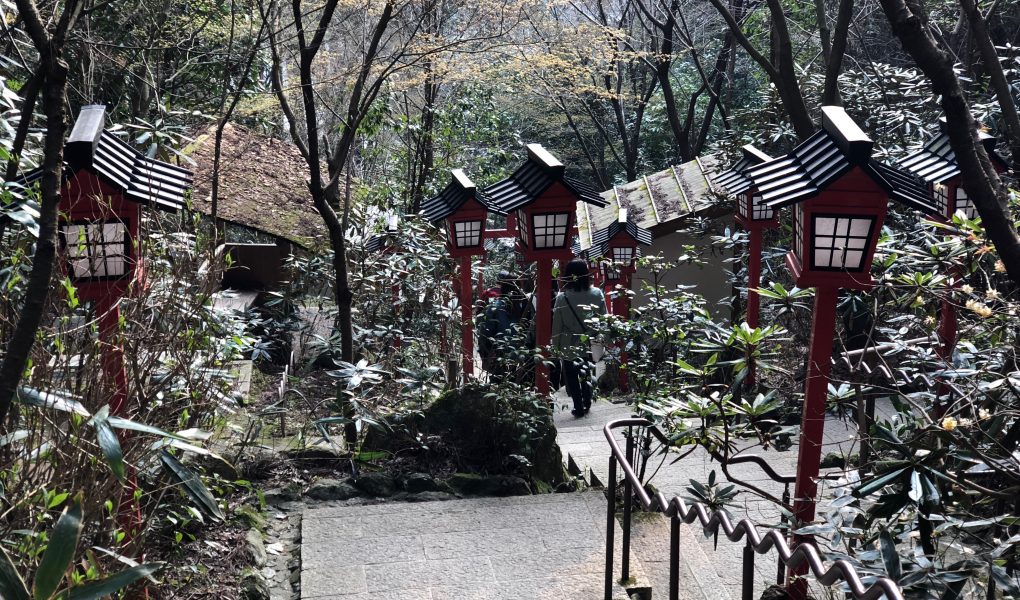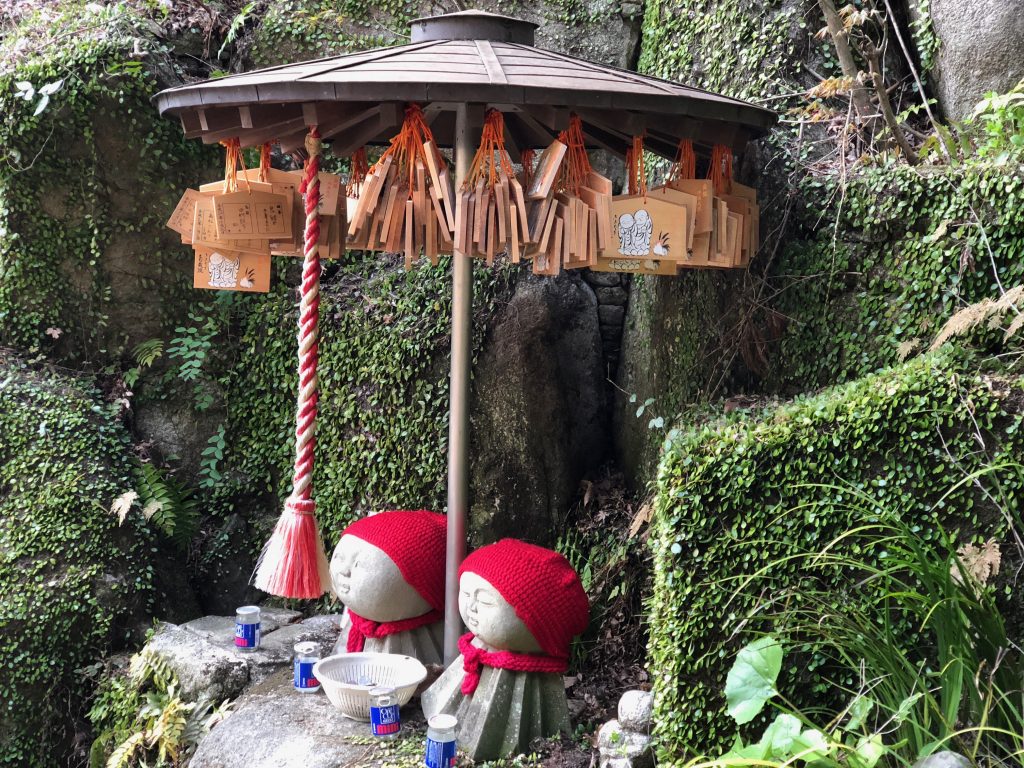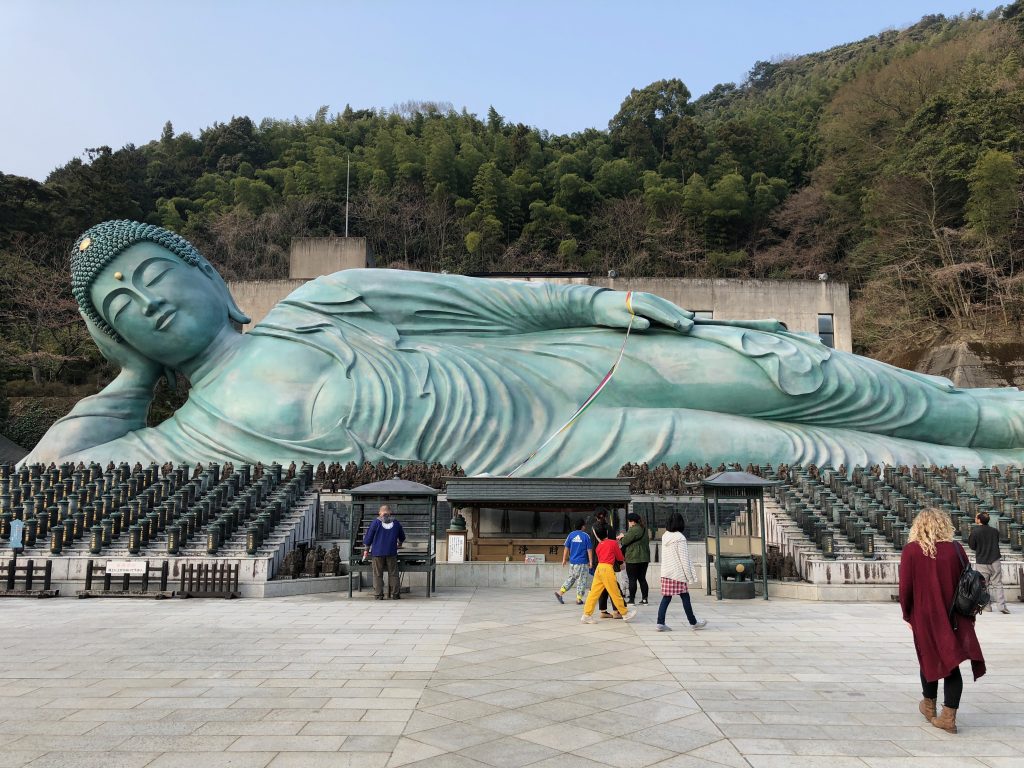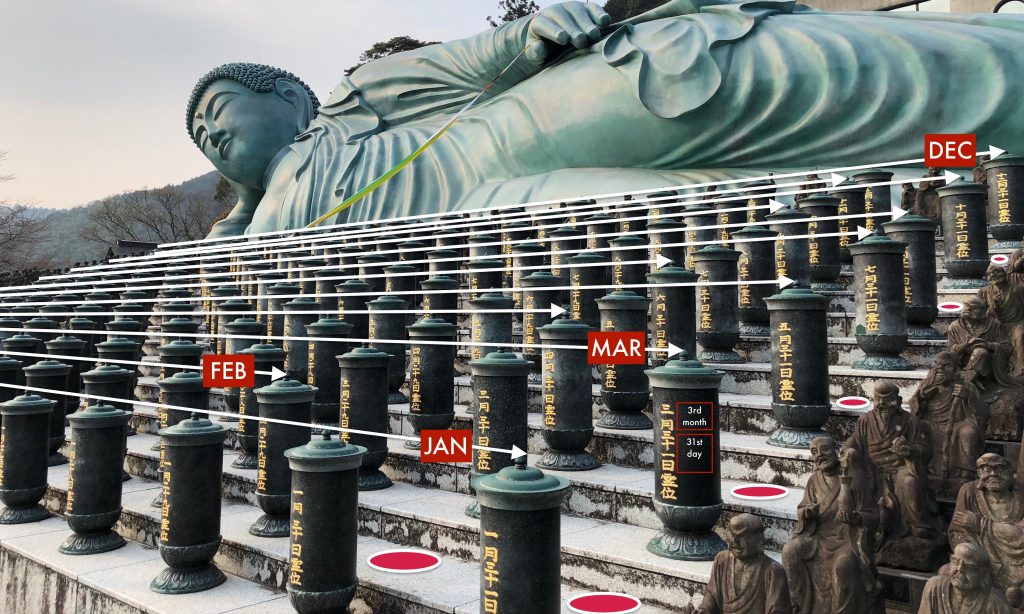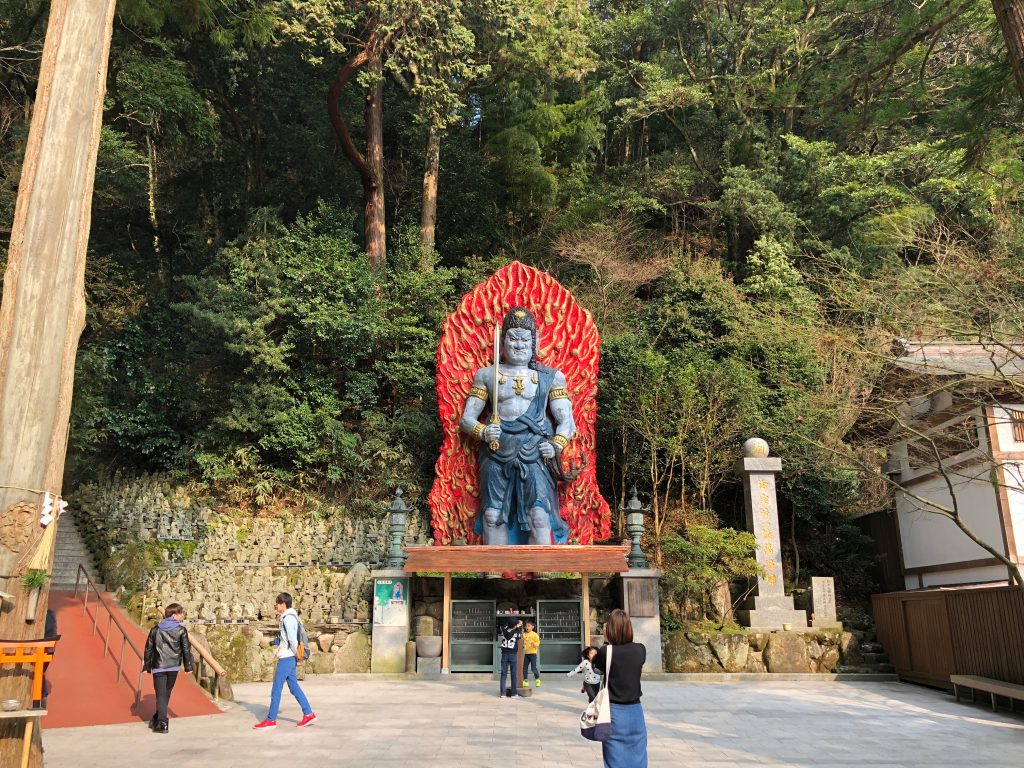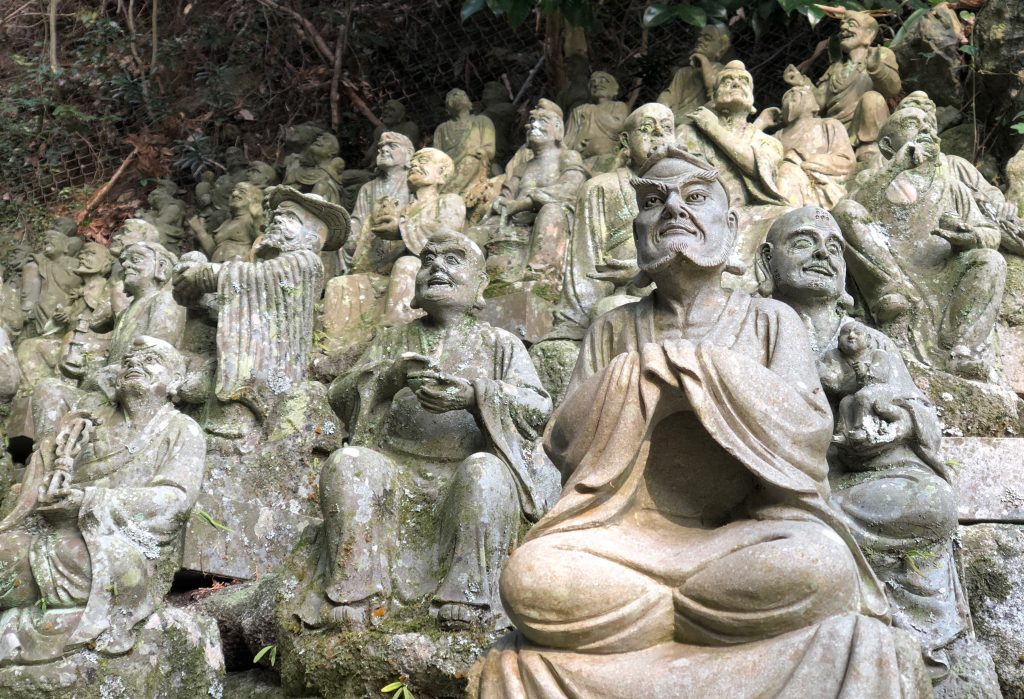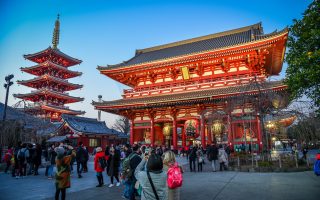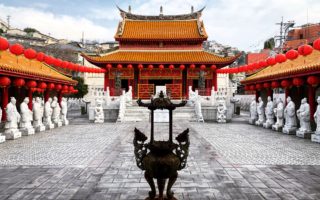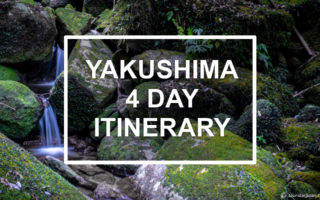Nanzo-in Temple near Fukuoka, Kyushu is best known for it’s gigantic reclining Buddha statue. The statue is said to be the largest bronze statue in the world. The temple itself does however have a very interesting history, which is worth telling.
Accommodation Tours Fukuoka / Kyushu 1-2 Day Pass for Fukuoka Subway
The history of Nanzo-in Temple
Nanzo-in has a very interesting and unusual history compared to other Buddhist temples I’ve visited in Japan. The story tends to drown a bit in the “big reclining buddha hype”, so I’d like to start this post of by talking about the history of the place.
Nanzo-in temple was originally located in a temple complex on Mount Koya (Wakayama), a very central place for Shingon Buddhism. Mount Koya is important because it was settled by the monk Kukai (called Kobo Daishi after his death in 835). Kukai was the source of what is today known as the Shingon Sect of Buddhism. The temple was moved from Mount Koya to it’s current location in Kyushu in 1899 because an anti-buddhist movement swept across Japan in 1886 and threatened to tear the temple down. Locals were very unhappy with that, and a big effort was made to relocate the temple to its current location.
Sasaguri Pilgrimage Walk
Shingon Buddhism is closely associated with the Shikoku-88, a 1200km long pilgrimage around the island of Shikoku. On Shikoku-88 the pilgrim, who typically covers the distance in 6-8 weeks, visits 88 temples on his walk. The temple complex at Mount Koya is a place where the pilgrims will often go before starting, and after finishing the pilgrimage. Since Nanzo-in temple was moved away from its home area on mount Koya, a tribute to the Shikoku-88 was established in Kyushu in the form of the “Sasaguri pilgrimage route”. The Sasaguri pilgrimage route is a much shorter pilgrimage which can be walked in its full length in about 3 days. It also takes the pilgrim to 88 locations and Nanzo-in is the main location. Inside the big reclining Buddha sand is stored from each of the 88 temples in Shikoku – another nice little tribute. I haven’t done the Sasaguri pilgrimage myself (yet), but check out this awesome blog post about the walk if you are interested.
The reclining Buddha
By far, the main attraction at Nanzo-in temple is the huge reclining Buddha statue. This is what attracts most people, and admittedly the statue was also what attracted me in the first place. The statue lays with a nice green backdrop of the forest and a collection of 365 columns or jars in front of it.
Meaning of the columns
I’ve read three or four different explanations of the columns, but the most plausible I could find was that the columns represents each day of the year, and people come here to send messages to their ancestors and lost ones. The message is written on a piece of paper and placed inside the jar corresponding to the death day of the person. I think this is a really a beautiful way to remember your loved ones. Other sources explain that ashes of the deceased are stored in the jars – this is somehow in line with the “message” story. I tried my best to count the columns and decipher the writing on them, and it’s pretty clear to me that each column represents a day of the year, arranged in a grid format. Rows are months and columns are days. You also clearly see that rows 2, 4, 6, 9 and 11 miss jars compared to the other rows. Those numbers of course represent February, April, June, September and November which are all the short months of the year.
Why Buddha is reclining
The statue of the reclining Buddha is a bit unusual for Japan. In Japan, usually Buddha is depicted in a seated meditating pose. The reclining Buddha, which symbolizes his crossing into Nirvana, is very common in south-east asian countries like Thailand and Myanmar. And not surprisingly the statue is linked to Myanmar. Nanzo-in has donated money to the poor in Myanmar and Nepal for many years, and as a thank you a Buddhist society from Nepal decided to donate some of the ashes of Buddha. The big reclining Buddha in Nanzo-in was built to house those ashes.
Is the reclining Buddha really the biggest in the world?
Some source say that the reclining Buddha is supposed to be the largest bronze statue in the world. After seeing it I must say it is impressive, but I was really questioning if it was truly the biggest bronze statue in the world. Focus should really be on the statue and what is symbolizes, but a small part of me really wanted to know if this is really the biggest in the world. A bit of skilled internet research gave me some pointers. It probably isn’t the biggest bronze statue in the world, nor the biggest in Japan. It is however possible that it’s the worlds biggest reclining buddha in Bronze. Regardless, it’s extraordinarily beautiful, well maintained and well worth a visit.
Acala (Fudō Myō-ō)
OK, maybe you find it strange that I cover the gigantic Acala statue as one of the last things in this post given that it is the first, and most imposing thing you see when you arrive at Nanzo-in. I chose to do so because the explanations behind this statue are a bit more complex.
You really can’t miss it. That 10 meter tall statue of an angry looking guy with a sword in one hand, a rope in the other and backed by a sea of flames – that’s what I am talking about. What’s up with that? If you are Buddhist, you might be familiar with him already. If not, I’ll try to give you a short introduction here. Heads-up: it might be a bit technical if you aren’t too much into Buddhism but nevertheless interesting.
The character Acala has different names in different buddhist countries. In Japan Acala is called “Fudo Myo-o“. Fudo Myo-o is often translated to “immovable”, but if you break it down “Fudo” means “immovable” and “Myo-o” is a “wisdom king“; Immovable Wisdom King. This character is represented in pretty much all branches of buddhism, and goes far back. Originally called Acalanātha, meaning “immovable protector” he is one of the 5 wisdom kings in Vajrayana Buddhism (Shingon falls under Vajrayana). The 5 wisdom kings are protectors of the 5 wisdom Buddhas. Here it gets a bit technical, so let’s just extract from this that “Fudo” is one of a group of 5 protective characters, and his specific characteristic is that he is a protector of all living. He burns away all hindrances and and impurity.
Acala was adopted by Chinese buddhists who named him “Budong”, meaning “immovable”. This character was imported into Japanese Buddhism by Kukai (Do you see the link to Shingon Buddhism?) who had studied in China, and brought the character and name back to Japan. Looking at the determination in the eyes and posture of this particular statue one can only interpret the “immovability” as “strong will”. Fudo Myo-o is not a surprising choice of protector for this temple, considering the history above and the relations to Shingon Buddhism. If you are interested in reading more about the technicalities then check out this link and this link.
Winning the lottery
Nanzo-in has a shrine dedicated to Shichifukujin – the seven lucky gods. One of the seven lucky gods is Daikouten who is associated with wealth and good fortune. It’s said that the chief priest at Nanzo-in once won the lottery after placing his lottery ticket next to Daikouten. Since then, the temple has been associated with luck in lottery, and apparently people also come here for that. Had I only known this earlier, then I would have brought a ticket 🙂
Getting there
By train: from Hakata station take the Sasaguri line (direction Nogata) to Kidonanzoin-Mae Station. From here it’s a 5 minute walk to Nanzo-in. The train is covered by the JR Pass.

